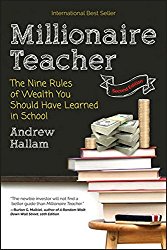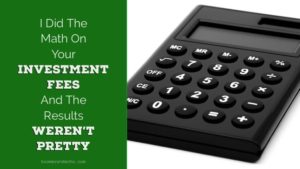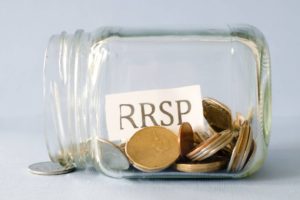 By Dr. Networth
By Dr. Networth
Special to the Financial Independence Hub
After reading My Journey to Passive Index Investing – Part 1, you may think that I have it in for financial advisors. I don’t. I believe the majority of financial advisors truly want to help their clients, but either their hands are tied or they have misguided beliefs.
The way financial advice compensation is structured creates a situation which, unfortunately, benefits the financial industry more than the individual investor. There are also some financial advisors who truly believe active management beats out passive index investing over the long-term, despite high commissions/MERs and strong evidence which says otherwise. Stay away from these financial advisors, since they have “drank the Kool-Aid.”
I believe a financial advisor with a CFP designation should have a fiduciary responsibility to create a comprehensive financial plan. This includes insurance, estate planning, portfolio management (using low-cost ETFs/funds), as well as “holding your hand” during the inevitable market corrections.
Is advice worth 1 or 2% in fees?
How much is that worth? This is a difficult question to answer. I don’t think it is worth the typical 1-2% in fees, which most banks and financial firms charge, especially if you have a large portfolio. With the implementation of “Robo-advisors” and financial advisors that charge flat-fee or hourly-based (not tied to commissions on products), consumers are now beginning to have more choice for financial advice at a lower cost.
As you may recall, Part 1 ended with me as a newbie staff physician in 2009 with little financial knowledge and an idea planted in my mind to “check out ETFs.”
It wasn’t until 2010 when I came across an article in the Globe and Mail, by Rob Carrick, where he rated the best personal finance blogs of 2010. One of the blogs caught my eye: “Canadian Couch Potato,” written by Dan Bortolotti, which has been the best resource for index investing in Canada.
 Through CCP, I came across another Canadian personal finance blogger by the name of Andrew Hallam, and his book “Millionaire Teacher. The Nine Rules of Wealth You Should have Learned in School“, which was originally published in 2011 (updated in 2017).
Through CCP, I came across another Canadian personal finance blogger by the name of Andrew Hallam, and his book “Millionaire Teacher. The Nine Rules of Wealth You Should have Learned in School“, which was originally published in 2011 (updated in 2017).
Hallam’s book is worth the price of admission, since he has read a ton of personal finance/investing books, and has summarized succinctly in his book. If you still have doubts whether passive investing beats active investing over the long-term those doubts will be put to rest after reading Chapter 3. Physicians practice evidence-based medicine, because research backs it up. The same concept should apply when it comes to investing. The enormous amount of evidence in favour of passive investing is, in my opinion, equivalent to a “Grade A” recommendation in evidence-based medicine. 

 I have read my fair share of excellent finance books/blogs, but everything that you need to know about personal finances and index investing in Canada can be essentially found in these two resources. If you read Hallam’s book and CCP’s blog (in particular his “Model Portfolios“), then you will:
I have read my fair share of excellent finance books/blogs, but everything that you need to know about personal finances and index investing in Canada can be essentially found in these two resources. If you read Hallam’s book and CCP’s blog (in particular his “Model Portfolios“), then you will:
-
Know more than the majority of financial advisors out there
-
Understand that the #1 determinant of your long-term investment returns is your asset allocation (% stocks: % bonds)
-
Understand that the #2 determinant of your long-term investment returns is to keep fees/MERs low by using low-cost index ETFs/funds, which will outperform the majority of actively-managed funds
-
Understand how to manage your own portfolio with low cost ETFs with minimal effort/time
If you spend a bit of your time with these two resources, then you will eventually be able to save 1-2% MER each year by managing your own portfolio. 1-2% savings on a $1 million dollar portfolio will be $10,000-$20,000 per year, every year, for the rest of your life. That is a considerable amount of money which can be used on your family instead, such as taking 1 or 2 nice family vacation trips per year. For the equivalent amount, how many hours would you need to work at your job?
Once everything has been set up, you only require 30 minutes per month to manage this portfolio. It really isn’t that difficult, as Loonie Doctor explains. However, taking that first step to managing your portfolio can be frightening and may fill you with self-doubt. Comparable to a medical student learning a new procedure/skill – “See one, do one, teach one”. These 2 resources will help you with the “See one” part. At some point, you will need to take the plunge. Follow that with sharing your knowledge with others, and you will become an “expert” in DIY passive index investing.
Analysis Paralysis
A point I would like to mention is the “law of diminishing returns” when it comes to learning about index investing. After a certain point, any additional time spent learning about the nuances of index investing will probably not result in better returns, and may in fact, cause analysis paralysis: Continue Reading…
 A few weeks ago I invited readers to share their portfolio details with me so I could help ‘do the math’ on their investment fees. Many of you did, and the results weren’t pretty. From accounts loaded with deferred sales charges (DSCs), management expense ratios (MERs) in the high 2 per cent range, and funds overlapping the same sectors and regions, it was a predictable mess of over-priced products.
A few weeks ago I invited readers to share their portfolio details with me so I could help ‘do the math’ on their investment fees. Many of you did, and the results weren’t pretty. From accounts loaded with deferred sales charges (DSCs), management expense ratios (MERs) in the high 2 per cent range, and funds overlapping the same sectors and regions, it was a predictable mess of over-priced products.







